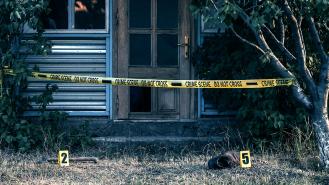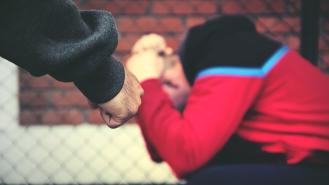
'Murder tourism' sites popular with true crime fans
When news breaks of particularly violent, cruel or unusual crimes, our instant reaction to them is generally one of shock and revulsion. And quite right too.
'The police have caught a serial killer that slaughtered two dozen women and incinerated them in his back garden? What?! That’s unbelievable… And disgusting. What an awful, evil human being he must be!'
It doesn’t take long before that shock wears off, though. The disgust may remain, but a new feeling creeps in. We become intrigued. We want to hear more. We want to read more. We want to see more.
For most folk, our morbid curiosity can be satiated by an article, book, documentary or podcast. But for others? That’s all just too passive and secondhand. They need to experience things, up close and personal. They want to visit the killer’s house and see the scorched earth where the bodies burned.
It’s gruesome, it’s macabre, it’s maybe even a little ghoulish. It’s dark tourism and it’s big business.
Also known as ‘grief’ or ‘black’ tourism, dark tourism sees people with an interest in the gloomier side of life visiting places associated with great violence, death or tragedy. Examples of places to check out might include concentration camps, sites of nuclear fallout or - as in these cases - (in)famous murders...
Where: 25 Cromwell Street, Gloucester. Why: Fred & Rose West.
In 1996, Gloucester City Council completed the compulsory purchase of an end-of-terrace house on a quiet street in Gloucester, a city in West England that borders the beautiful hills of the Cotswolds. This was no redevelopment scheme or anything of that kind, though. This was so that they could destroy it, ensuring that the building no longer existed.
25 Cromwell Street was - and remains - Britain’s most notorious ever murder house. The decision to raze the infamous house of horrors to the ground was met with widespread approval by local residents. But there was one small section of society secretly cursing the demolition - ‘dark tourists’.
Fred and Rose West killed a dozen young women in 1970s, with the bodies of nine of them being dismembered and buried in the cellar and garden of 25 Cromwell Street. 25 years ago, they were uncovered by police in an excavation that would shock and revile the world.
It didn’t take long for locals to descend to the address to rubberneck at the scene. And understandably so, only this was huge and quite unbelievable news. The media, of course, were already there in their droves. The place had become something of a sideshow.
Eventually things quietened down, but the severity of the excavations left the property structurally unsafe and so the decision to knock it down was made. Yet while few people from the area bear the site much mind anymore, it still attracts pilgrimage from dedicated true crime buffs from across the world, who visit out of sheer morbid inquisitiveness. Despite there only being a footpath now to gawp at.
Where: The Warehouse District, Milwaukee, Wisconsin. Why: Jeffrey Dahmer.
Murder tourism can prove controversial. Especially when the crimes are still fresh in the minds of the community.Jeffrey Dahmer, ‘The Cream City Cannibal’, was still abducting, raping, killing and dismembering young men and boys into the 1990s. So to many in the man’s home city of Milwaukee, it’s something of a sore spot. Especially given that many of the victims’ families still live there.
People can pay $25 to take a guided tour of the warehouse district, one that will take them around the area that Dahmer used to cruise for people to kill. The tour focuses on Shaker’s Cigar Bar, the infamous killer’s favourite bar and pick-up spot.
While some Milwaukeeans object to this potentially exploitative business, plenty of others will defend such tours, claiming them to be almost educational.
One thing we can say for certain is that whatever your thoughts on the ethics of dark tourism, it’s not a modern invention by any stretch…
Where: 230 Second Street, Fall River, Massachusetts. Why: Lizzie Borden.
Human beings have always been drawn to the darker side of life. Nowadays we can’t get enough of violence and horror in cinemas, but - let’s face it - it wasn’t all that long ago that a fun day out would involve watching people be executed in a public square.
The rather grisly desire to visit murder scenes hit something of a fever pitch well over a century ago with the case of Lizzie Borden. Accused, tried and acquitted of the grisly axe murders of her parents, Borden became America’s most infamous woman back in the 1890s. Wealthy East Coasters became fascinated with the case, discussing theories and trading tall tales about what they’d heard. The house, in the city of Fall River in Massachusetts, became a popular attraction for curious tourists. In fact, it still is.
Such was the widespread fame of the case, the legacy of it lives on to this day. ‘The Lizzie Borden House’ is now open to the public to snoop around, with lots of the original furniture still remaining. Not only is it a museum, it’s also a bed and breakfast. You can actually sleep in the bedroom where Lizzie (may have) ‘given her mother forty whacks’.
The Borden house is a little slice of history. But for the whole pie, there’s only one place to visit…
Where: Dealey Plaza, Dallas, Texas. Why: The JFK Assassination.
The Texas School Book Depository overlooking Dallas’ Dealey Plaza is a Mecca to US history buffs, true crime fans, murder tourists and ‘conspiracy theorists’ alike. Some descend to see where JFK was shot and killed on November 22nd 1963, while others visit to see if they can a feel for the Grassy Knoll and work out who they think really shot the 35th president of the United States. Visitors to the site find that there’s a handy white ‘X’ effectively marking the spot where Kennedy was when he was shot. The book depository is now a museum, with a pile of books stacked up at the window to replicate a sniper’s perch.
Where: Various Sites Around Whitechapel, East London. Why: Jack the Ripper.
Back in the late 19th century, the East End of London was a slum; poor, filthy and full of down-and-outs. With ‘pea souper’ fogs and poorly-lit alleys, it made for a happy hunting ground for the infamously anonymous Jack the Ripper. His stomping ground, Whitechapel, is still popular with anyone interested in history’s most known unknown serial killer. Walking tours are particularly favoured. Thirsty murder tourists keen to see where The Ripper’s victims - and maybe even the man himself - would sup their gin, drop into the Ten Bells pub for a pint and ‘a butcher’s’.
True crime buffs in the mood for a pub crawl can stroll down to The Blind Beggar, less than a mile away. There, they’ll find themselves in the very boozer in which Ronnie Kray shot Richardson gang rival George Cornell in March 1966.
Some may say that this kind of dark tourism is tacky or exploitative. And, well, it may be. Depending on how it’s carried out. Don’t pitch a tent outside a ‘murder house’ while the police are searching it. That’s too much, clearly. But with a little time, what’s wrong with visiting these places? Is it any different from visiting a battlefield? It’s all just history, isn’t it?
It’s just that some people, well, they’re more interested in the history of murders. That’s all.








